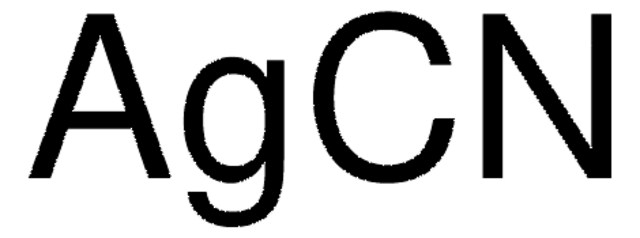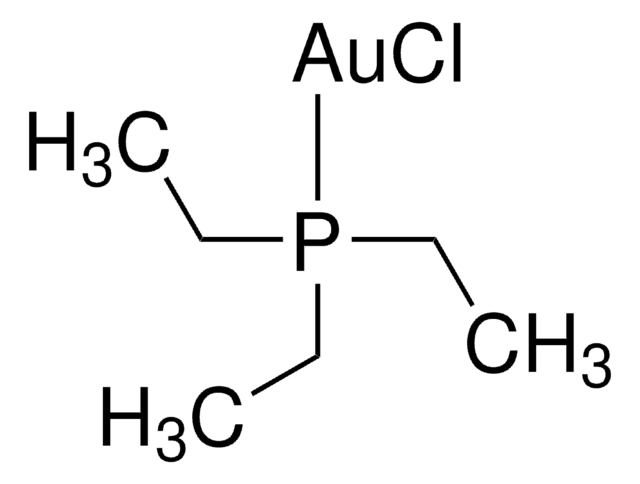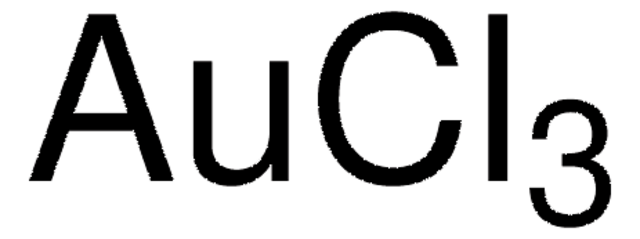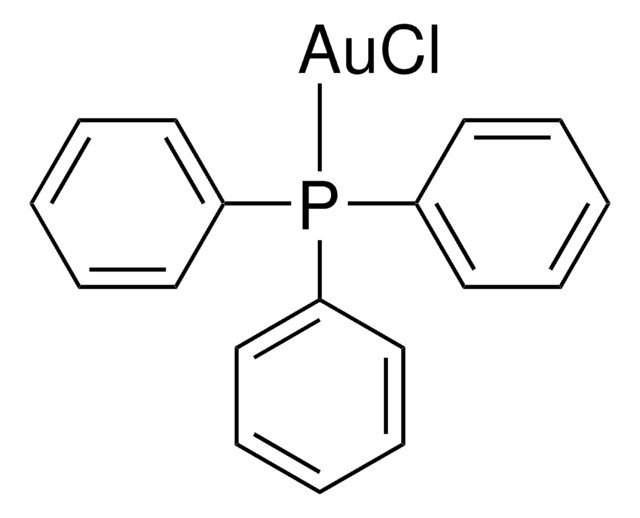All Photos(1)
About This Item
Linear Formula:
AuCN
CAS Number:
Molecular Weight:
222.98
EC Number:
MDL number:
UNSPSC Code:
12352300
PubChem Substance ID:
NACRES:
NA.23
Recommended Products
Quality Level
Assay
99.9% trace metals basis
form
powder
reaction suitability
core: gold
density
7.14 g/mL at 25 °C (lit.)
SMILES string
[Au]C#N
InChI
1S/CN.Au/c1-2;
InChI key
DRJJJWGHLJZDGQ-UHFFFAOYSA-N
Looking for similar products? Visit Product Comparison Guide
Signal Word
Danger
Hazard Statements
Precautionary Statements
Hazard Classifications
Acute Tox. 1 Dermal - Acute Tox. 2 Inhalation - Acute Tox. 2 Oral - Aquatic Acute 1 - Aquatic Chronic 1
Supplementary Hazards
Storage Class Code
6.1B - Non-combustible acute toxic Cat. 1 and 2 / very toxic hazardous materials
WGK
WGK 3
Flash Point(F)
Not applicable
Flash Point(C)
Not applicable
Personal Protective Equipment
dust mask type N95 (US), Eyeshields, Gloves
Regulatory Information
监管及禁止进口产品
Choose from one of the most recent versions:
Already Own This Product?
Find documentation for the products that you have recently purchased in the Document Library.
G G Graham et al.
Biochemical pharmacology, 56(3), 307-312 (1998-09-23)
There is considerable evidence that the anti-rheumatic gold complexes are activated by their conversion to aurocyanide. In order to understand the mechanism of production of aurocyanide, we investigated the involvement of myeloperoxidase in the reaction. This haem enzyme of neutrophils
Philip M Yangyuoru et al.
Journal of inorganic biochemistry, 102(3), 576-583 (2008-02-08)
Electrospray ionization spectra of potential cyanide-containing gold-drug metabolites revealed additional, weak, unanticipated peaks at approximately twice the mass of the gold(I) and gold(III) cyanide complexes. The exact masses correspond to proton-linked bimetallic complexes, [H[Au(CN)(m)](2)](-), (m=2,4). Further investigation revealed a total
José R Serrano et al.
Biophysical journal, 91(5), 1737-1748 (2006-06-13)
Previous attempts to identify residues that line the pore of the cystic fibrosis transmembrane conductance regulator (CFTR) chloride channel have utilized cysteine-substituted channels in conjunction with impermeant, thiol-reactive reagents like MTSET+ and MTSES-. We report here that the permeant, pseudohalide
D B Donato et al.
Environment international, 33(7), 974-984 (2007-06-02)
Wildlife deaths associated with cyanide-bearing mine waste solutions have plagued the gold mining industries for many years, yet there is little published data showing the relationship between wildlife mortality and cyanide toxicity. A gap of knowledge exists in monitoring, understanding
K H Verschueren et al.
FEBS letters, 323(3), 267-270 (1993-06-01)
The Na[Au(CN)2] heavy atom derivative contributed considerably to the successful elucidation of the crystal structure of haloalkane dehalogenase isolated from Xanthobacter autotrophicus GJ10. The gold cyanide was located in an internal cavity of the enzyme, which also contains the catalytic
Our team of scientists has experience in all areas of research including Life Science, Material Science, Chemical Synthesis, Chromatography, Analytical and many others.
Contact Technical Service









